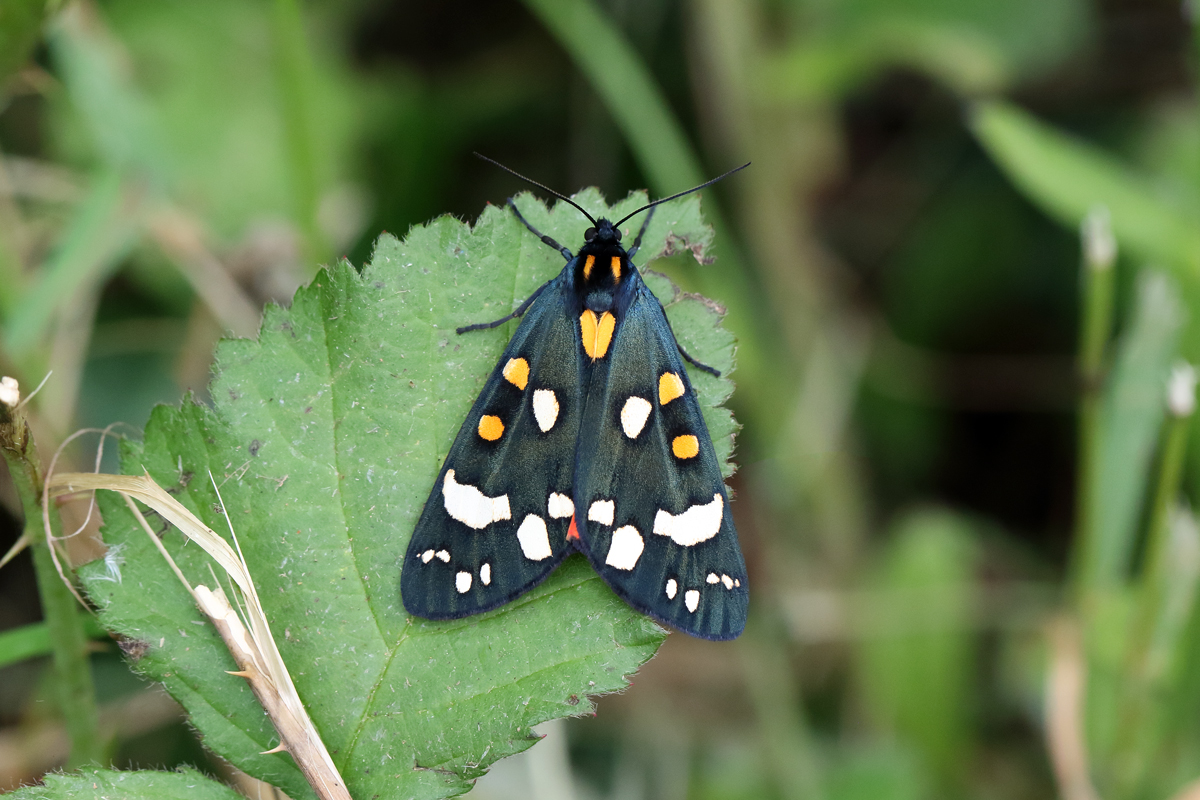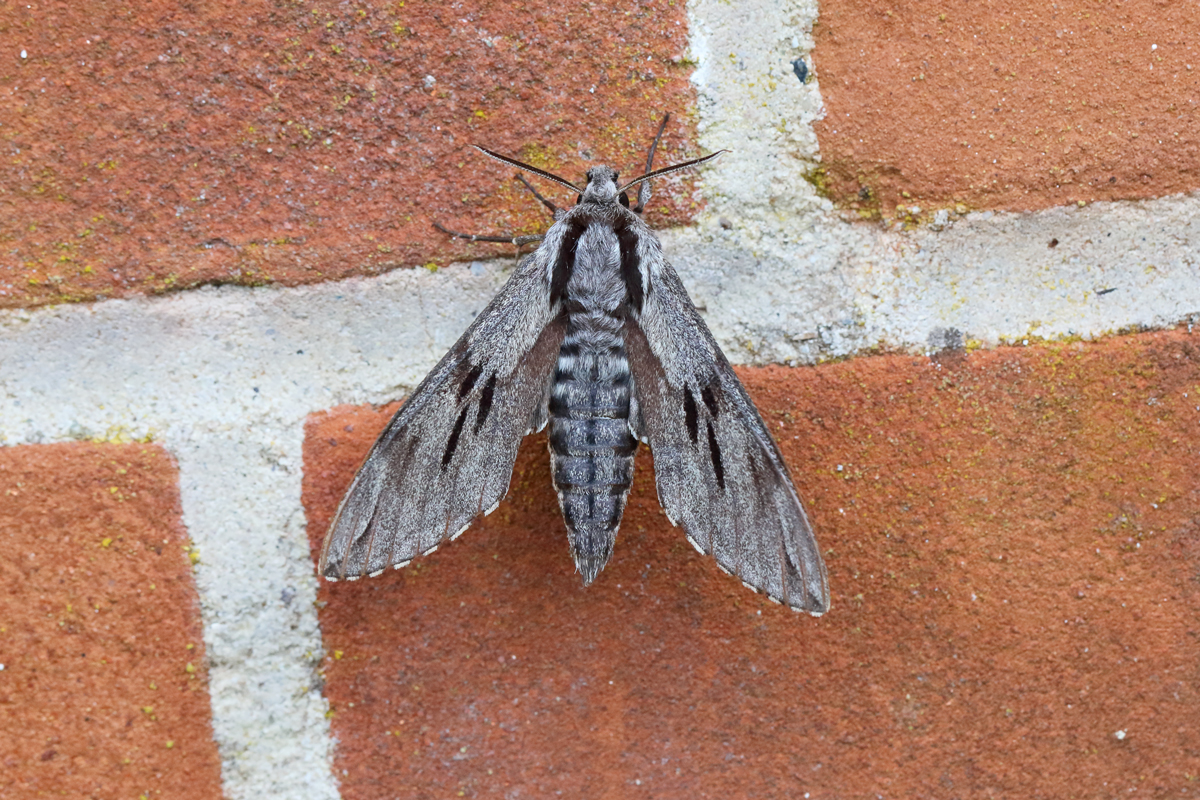Time for a catch up about what has been happening on the local patches.
22nd June 2025
Overnight on 22nd, a thunder storm broke the spell of warmer
weather.
In the morning we took a walk through one of our neglected upland patches,
Corby Woods, to the Pond to look for dragonflies. Unfortunately the weather
was overcast and breezy so it was an Odonata no-show apart from a couple of
Large Red and Common Blue Damselflies but we did see a few things of
interest.
Butterflies were undaunted by the weather. We saw 3 Large Skipper, 7
Red Admiral, 6 Speckled Wood, 1 Small Tortoiseshell, 4 Ringlet, 1 Small
Skipper and 1 Common Blue,
while Moths included 10+ Brown China Mark, an aquatic breeding moth around
the pond, and a Bordered White.

|
| Large Skipper |

|
| Ringlet |

|
| Small Skipper |
A few birds were also added to the notebook – 4 Crossbills, 4 Redpolls, 3 Tree
Pipits, 9 Willow Warbler, 1 Buzzard and 2 Garden Warblers, one of which was
unusually showy. It seemed to mob us as we walked past so there may have been
a nest of newly fledged young nearby.

|
|
Garden Warbler mobbing us on the path so we moved along.
|
The last week of June at home had ups and downs. The down just about out
weighing the up!
28th June 2025.
We were coming back through our village with the dog when we bumped into a
family of Spotted Flycatchers. This was the first local breeders here for
about a decade so it was great to see them. My first thought was how have I
missed the adults when I am out several times every day here? All I can think
is that they have been in the grounds of the Old Rectory, a place without
access.

|
|
Spotty Fly family, with adult at the top.
|
A Peregrine was seen on a couple of days too, once low overhead carrying prey
of some kind, looked like a young Jackdaw maybe?
Now, on to the downside. Tim Dean the Northumberland County Recorder advised
that a visitor to the area from Lincs had seen and photographed a female Honey
Buzzard coming in-off the sea at Seahouses Farm at 11am this morning! Ive
never seen one in the county and it is 30 years since my last in the UK, so
that one smarts a bit...A first for my patch.
29th June 2025
After a short visit to the Aln Estuary first thing where it was nice to see a
brood of 3 Avocet chicks teetering around their pool, a sight that would have
been considered unthinkable here only 10 years ago we moved up to Alnwick to
look for White letter Hairstreaks.
We didn’t have to look far. As we parked beside the Denwick Bridge bottle
banks, 3 were flitting around the top of an elm on the edge of the car park
but they stayed up top while we were there.
Downstream, through the wood a damp field corner was home to a pair of Broad
bodied Chasers that gave great views when the male was pestering the egg
laying female. A few Banded Demoiselle were on the river.
Back home, a Hummingbird Hawk-moth was nectaring on the valerian especially
planted for the purpose.

|
|
Hummingbird Hawk-moth.
|
1st July 2025
Let the Seawatching commence...
An hour at Cullernose Point this evening in torrential rain, never been so
pleased to have the fishing brolly. 61 Manx Shearwater N, 1 Puffin, 71
Sandwich Tern, 1 Little Tern, 4 Arctic Tern, 22 Common Scoter, 1 Whimbrel, 6
Lesser black backed Gulls. Not earth shattering but it is always good to make
a start.
6th July 2025
The morning started with a Raven calling from Hips Heugh outside our garden.
I headed off toe Seaton Point to wait for John. While loitering I had good
views of an immature Peregrine hunting the 300 Linnets in the weedy field, a
male Kestrel and a Barn owl hunting too.
We wandered to the bench on Seaton Point and put the morning in watching the
tide back in.
In calmish conditions we had -
Shelduck 16 inc with 2 broods of 6 and 8.
Goosander 2 N
Golden Plover 3 sum plum on the rocks
Whimbrel 2
Bar tailed Godwit 2 S
Common Sandpiper 1 on the rocks
Dunlin 2
Puffin many, 50+ all over the place.
Lesser black backed Gulls 13 N
Roseate Tern 12 N
Sandwich Tern 111 N
Arctic Tern 5 N
Common Tern 4 N
Manx Shearwater 17 N
Sedge Warbler 1
Whitethroat 9+
Mothing update -

|
|
Few Dark Swordgrass this week.
|

|
|
Zeiraphera isertana a first for me.
|

|
|
Monochroa ctytisella
|

|
| Sand Dart |

|
| Cydia fagiglandana |

|
| Freyers Pug |

|
|
Large Twin Spot Carpet
|

|
|
Rhigognostis incarnatella, a pair of them.
|

|
|
Crocidosema plebejana about 5th for the county.
|

|
|
Standard and dark forms Slender Brindle.
|



















































.jpg)
